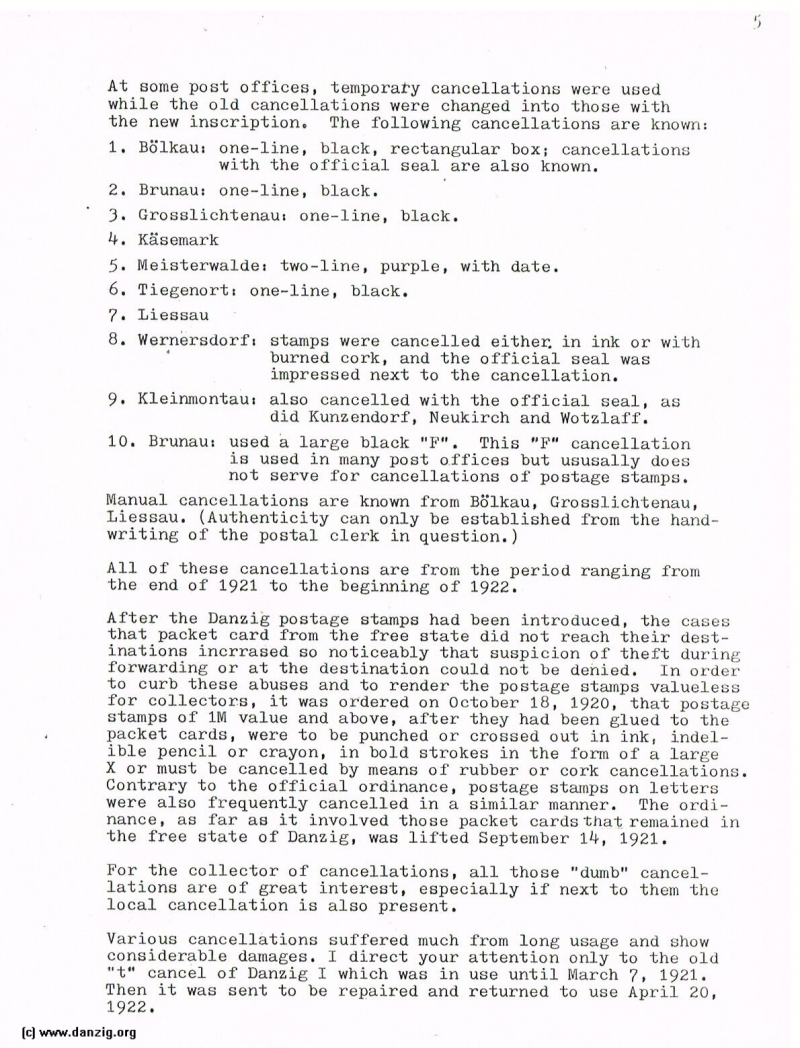
> HISTORY OF DANZIG’S MAIL AND POSTAL CANCELLATIONS
At some post offices, temporary cancellations were used while the old cancellations were changed into those with the new inscription. The following cancellations are known:
1. Bölkau: one-line, black, rectangular box; cancellations with the official seal are also known.
2. Brunau: one-line, black. ,
3. Grosslichtenau one-line, black.
4. Käsemark
5. Meisterwalde: two-line, purple, with date.
6. Tiegenort: one-line, black.
7. Liessau
8. Wernersdorf: stamps were cancelled either, in ink or with burned cork, and the official seal was impressed next to the cancellation.
9. Kleinmontau also cancelled with the official seal, as did Kunzendorf, Neukirch and Wotzlaff.
10. Brunau: used large black “F”. This “F” cancellation is used in many post offices but ussusally does not serve for cancellations of postage stamps.
Manual cancellations are known from Bölkau, Grosslichtenau, Liessau. (Authenticity can only be established from the hand writing of the postal clerk in question.)
All of these cancellations are from the period ranging from the end of 1921 to the beginning of 1922.
After the Danzig postage stamps had been introduced, the cases that packet card from the free state did not reach their destinations increased so noticeably that suspicion of theft during forwarding or at the destination could not be denied. In order to curb these abuses and to render the postage stamps valueless for collectors, it was ordered on October 18, 1920, that postage stamps of 1M value and above, after they had been glued to the packet cards, were to be punched or crossed out in ink, indelible pencil or crayon, in bold strokes in the form of a large X or must be cancelled by means of rubber or cork cancellations. Contrary to the official ordinance, postage stamps on letters were also frequently cancelled in a similar manner. The ordinance, as far as it involved those packet cards that remained in the free state of Danzig, was lifted September 14, 1921.
For the collector of cancellations, all those “dumb” cancellations are of great interest, especially if next to them the local cancellation is also present.
Various cancellations suffered much from long usage and show considerable damages. I direct your attention only to the old “t” cancel of Danzig 1 which was in use until March 7, 1921. Then it was sent to be repaired and returned to use April 20, 1922.
Danzig Report Nr. 15 – July - August - September - 1977, Page 6.
Hits: 3527
Added: 05/06/2015
Copyright: 2025 Danzig.org

